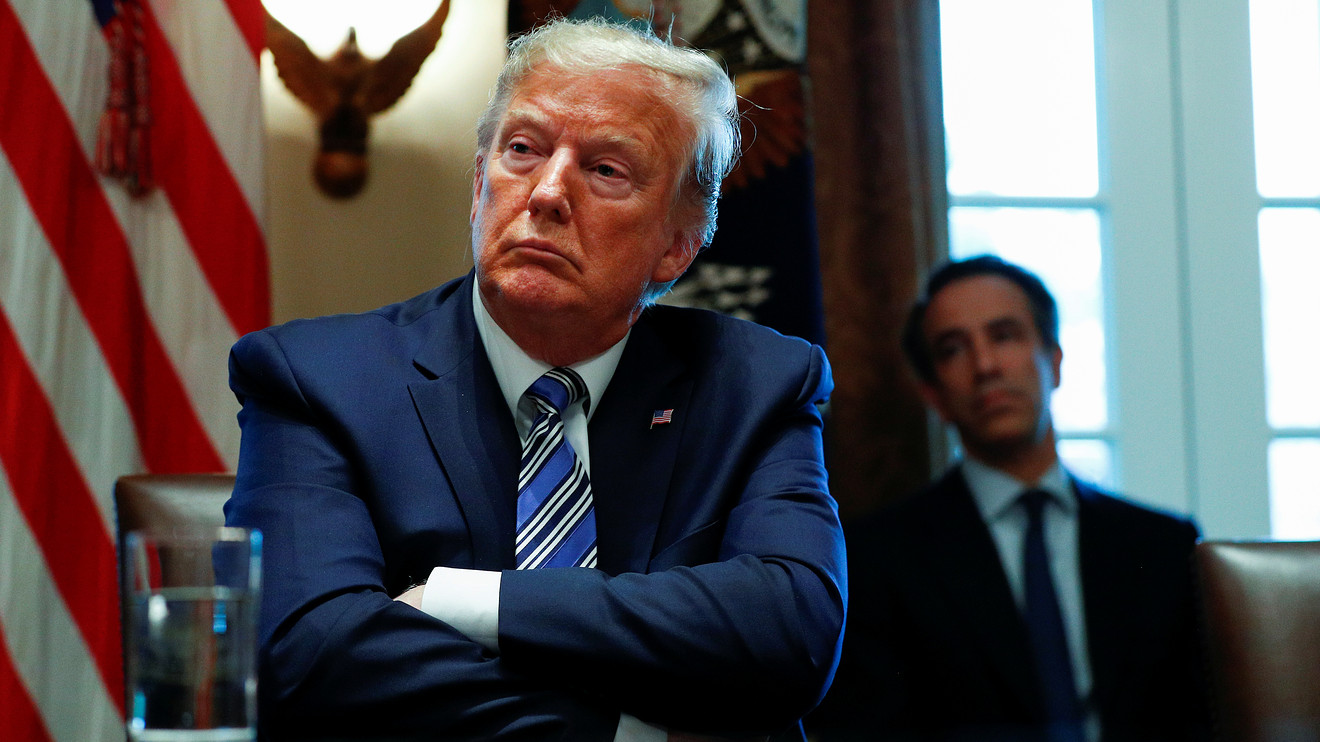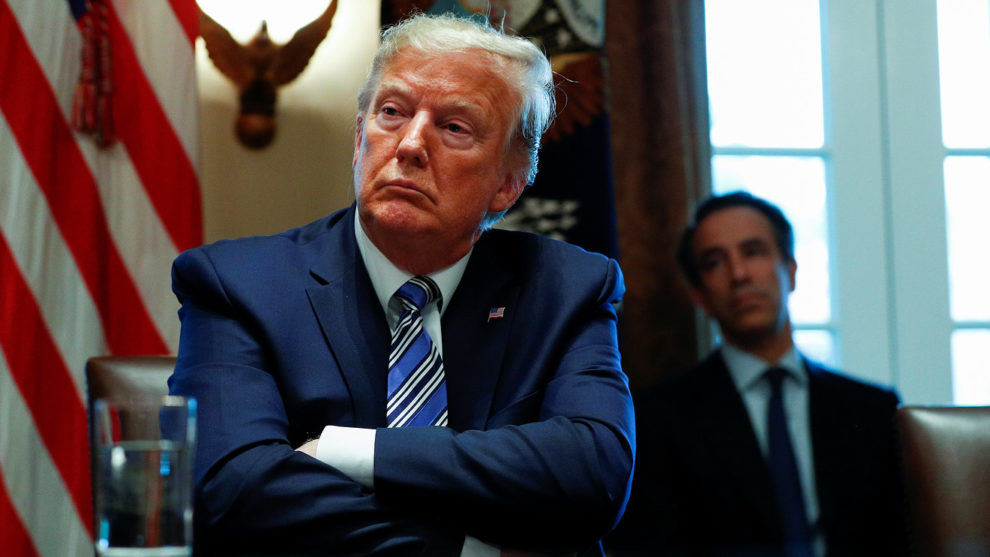
U.S. stock futures tumbled Thursday, on the heels of President Donald Trump’s address to the nation, and following another steep selloff on Wall Street that snapped a more-than-decade-long bull market for the Dow.
The president spoke live from the Oval Office at 9 p.m. Eastern, and detailed plans on how the government is addressing the spreading coronavirus outbreak, including economic stimulus plans. Most notably, Trump said travel between the U.S. and Europe will be suspended for 30 days, beginning Friday.
What are markets doing?
Dow Jones Industrial Average futures YMH20, -4.85% were little changed before the address, but tumbled sharply immediately after Trump spoke. In recent trade, they were down 1,171 points, near their 5% daily limit, at 22,404. S&P 500 futures ESH20, -4.48% were off 124.55 points, or 4.6% to 2,614.75, after touching its downside limit in earlier action, and Nasdaq-100 futures NQH20, -4.65% dropped 4.9%.
Earlier, the Dow DJIA, -5.86% plunged 1,464.94 points, or 5.9%, to close at 23,553.22, marking a bear market, widely defined as a drop of at least 20% from a recent record intraday peak. That ended the blue-chip gauge’s 11-year bull-market run.
Read: The Dow just tumbled into a bear market — here’s how long those downturns last on average
The S&P 500 SPX, -4.89% fell 140.85 points, or 4.9%, to close at 2,741.38. The Nasdaq Composite COMP, -4.70% tumbled 392.20 points, or 4.7%, to end at 7,952.05.
Bear-market numbers loomed for those two indexes as well. The S&P 500 will fall into a bear market if it closes below 2,708.92 — a little over 32 points — while the Nasdaq will do so if it closes under 7,853.74, about 98 points lower than Wednesday’s close.
What was driving markets?
Futures trading was muted ahead of Trump’s address, but started to fall after he announced the travel suspension. Trump also promised financial relief “for workers who are ill, quarantined or caring for others due to coronavirus.”
The president also said the Small Business Administration will make emergency low-interest loans available to affected businesses, and said the government will defer tax payments for certain individuals and companies for three months. But those measures were apparently far less than what traders were expecting, and the Europe travel suspension could come with a steep economic cost, though Trump administration officials later clarified that the travel restrictions will apply mostly to foreign nationals who have been in certain parts of Europe prior to traveling to the U.S.
“The biggest source of disappointment on Wall Street was the lack of specific ways to support people and [small- and medium-size enterprises] of the sort that were announced in the U.K. budget,” said Jasper Lawler, head of research at London Capital Group, in a note.
“Paid sick leave, free testing and a solution for uninsured Americans were all missing. The acrimony between the Republican White House and Democratic Congress since impeachment seems to be making it harder for the U.S. to respond with the speed and vigor required,” he said.
Stocks fell Wednesday after U.S. Treasury Secretary Steven Mnuchin said a robust economic stimulus plan would take a while to get through Congress, while he backed plans to help small businesses. On Capitol Hill, Trump’s proposal to cut payroll taxes was met with skepticism from both parties.
“Even in the best-case scenario it will take time for spending to return to normal,” Ian Shepherdson, chief economist at Pantheon Macroeconomics, said in a note. “We remain firmly of the view that a sustained market recovery cannot begin until the number of new cases clearly has peaked, but that’s probably several weeks away. In the meantime, the numbers likely will get substantially worse.”
Meanwhile, the World Health Organization on Wednesday declared the coronavirus outbreak a global pandemic, as governments from Italy to California imposed bans on public gatherings in an effort to slow the illness’s spread.
How were other markets trading?
European equities were hit hard, with the pan-European Stoxx 600 Europe index SXXP, -5.43% down 5.6%, with airlines hard hit after Trump’s announcement of the travel ban.
Oil futures were sharply lower. West Texas Intermediate crude for April delivery CLJ20, -5.55% was last down 5.6% at $31.12 a barrel, while May Brent crude BRNK20, -6.12%, the global benchmark, was down 5.4% at $33.83 a barrel.
In Australia, the S&P/ASX 200 XJO, -7.36% fell into bear-market territory during Wednesday trading, and fell another 5% Thursday. Japan’s Nikkei NIK, -4.41% also plunged around 4%, and Hong Kong’s Hang Seng HSI, -3.66% slid 3.7%.
div > iframe { width: 100% !important; min-width: 300px; max-width: 800px; } ]]>






